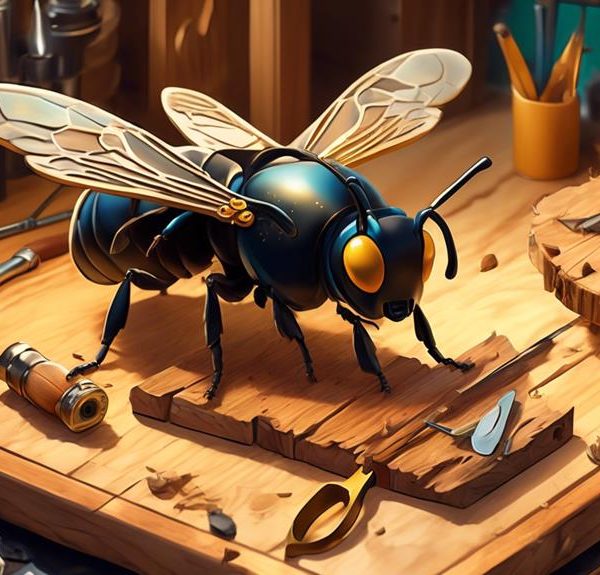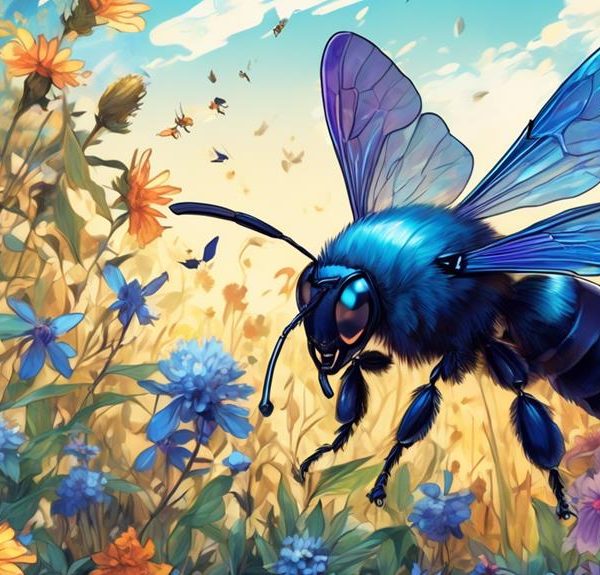Learn about the intriguing, yet misunderstood role of carpenter bees in Western Pennsylvania's ecosystem, and their impact on local wooden structures.
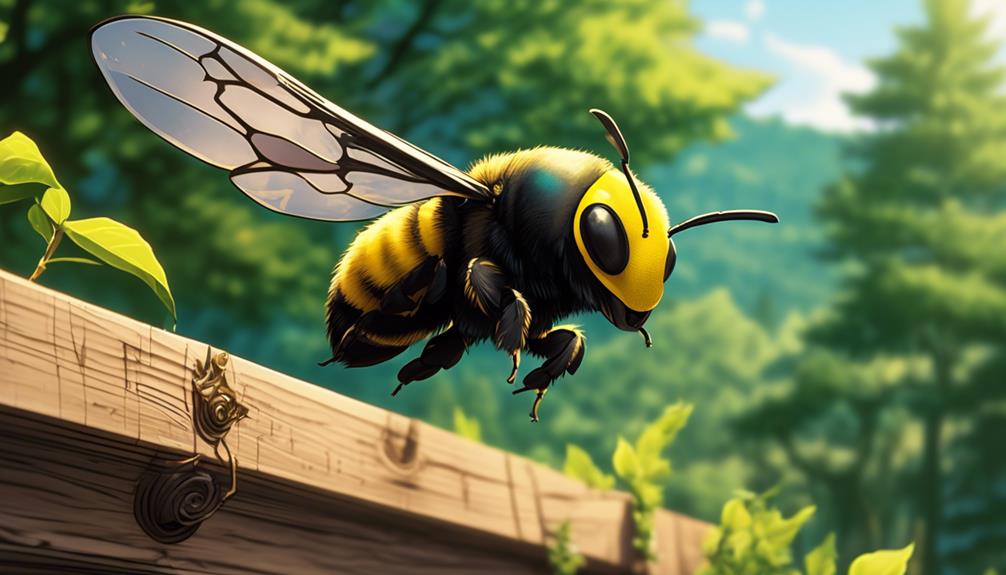
Carpenter Bees in Western Pennsylvania
You've likely heard the saying, 'busy as a bee,' but have you ever considered the industrious carpenter bees of Western Pennsylvania? These buzzing architects, true to their name, are proficient at drilling into wood, creating intricate tunnels to house their young.
You might be wondering, 'What's the big deal?' Well, let's just say they're not exactly beloved by homeowners for their woodworking skills. Carpenter bees can cause significant damage to untreated wooden structures over time. But before you grab a swatter, consider this: these misunderstood creatures play a critical role in our local ecosystem.
Intrigued? Stick around, there's a lot more to uncover about these fascinating pollinators.
Key Takeaways
- Carpenter bees are solitary creatures that carve their own nesting tunnels in wood, preferring softwoods such as pine, cedar, and fir.
- They play a vital role in pollination, transferring pollen for fruit and seed production, contributing to biodiversity, and aiding in the decomposition of dead wood.
- Carpenter bees do not produce honey or live in hives, but instead lay eggs and provide 'bee bread' for their offspring.
- Identifying carpenter bee nests can be done through the presence of smooth, round holes about half an inch in diameter, sawdust beneath the hole, and a series of tunnels or 'galleries' within the nest.
Understanding Carpenter Bees
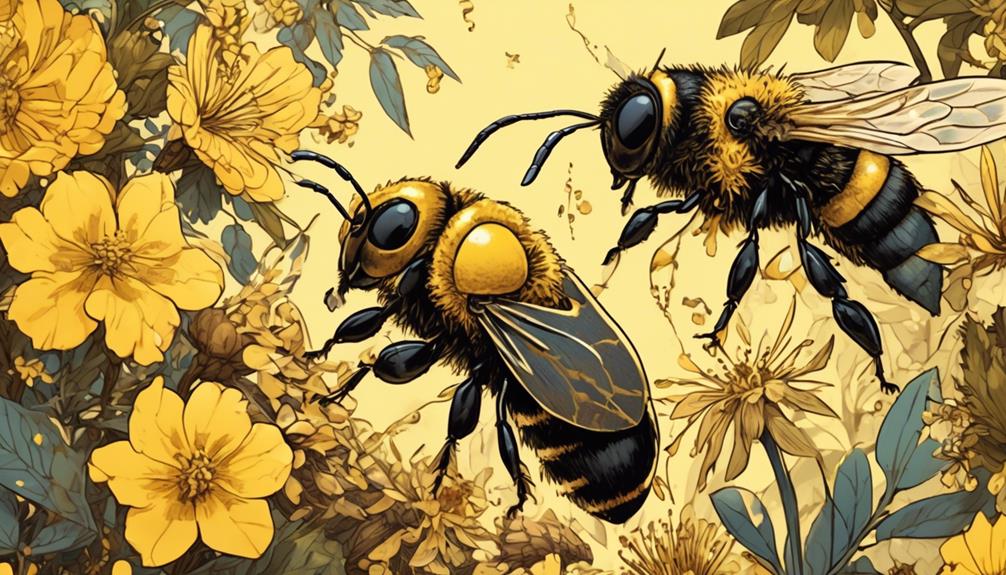
To fully grasp the nature of carpenter bees, you'll need to delve into their distinctive characteristics, from their solitary behavior to their unique method of nesting within wood. Unlike social bees, such as honeybees and bumblebees, carpenter bees are solitary. Each female carves out her own nesting tunnel, lays her eggs, and provisions them with a food source independently. They're not aggressive, and the males, while territorial, can't sting at all.
Carpenter bees have an uncanny ability to create precise, cylindrical tunnels in wood for nesting, which are about half an inch in diameter and can extend up to ten feet in length. This is primarily due to their robust mandibles and perseverance. They prefer softwoods, like pine, cedar, and fir, which are easy to excavate. You'll often find their entrance holes on the underside of wood surfaces, where they're less likely to be disturbed.
While they're considered pests due to the structural damage they can cause, carpenter bees play a vital role in pollination. Their foraging habits lead to effective cross-pollination, thus contributing to the biodiversity of our ecosystem.
Carpenter Bees' Role in Ecosystem

Despite the potential structural harm they can inflict, it's crucial to acknowledge the indispensable role carpenter bees play in our ecosystem. These industrious insects are vital pollinators, transferring pollen from the male parts of a flower to the female parts, thereby enabling the production of fruits and seeds.
While you may view their wood-boring behavior as destructive, it's actually a key part of their contribution. These tunnels serve as nests where they lay their eggs, fostering the next generation of pollinators. Their extensive network of burrows also aids in the decomposition of dead wood, accelerating the recycling of nutrients back into the soil.
Carpenter bees also serve as a food source for numerous predator species, including birds and other insects. Their presence helps to maintain a balance in the local fauna population.
Behavior and Lifestyle of Carpenter Bees
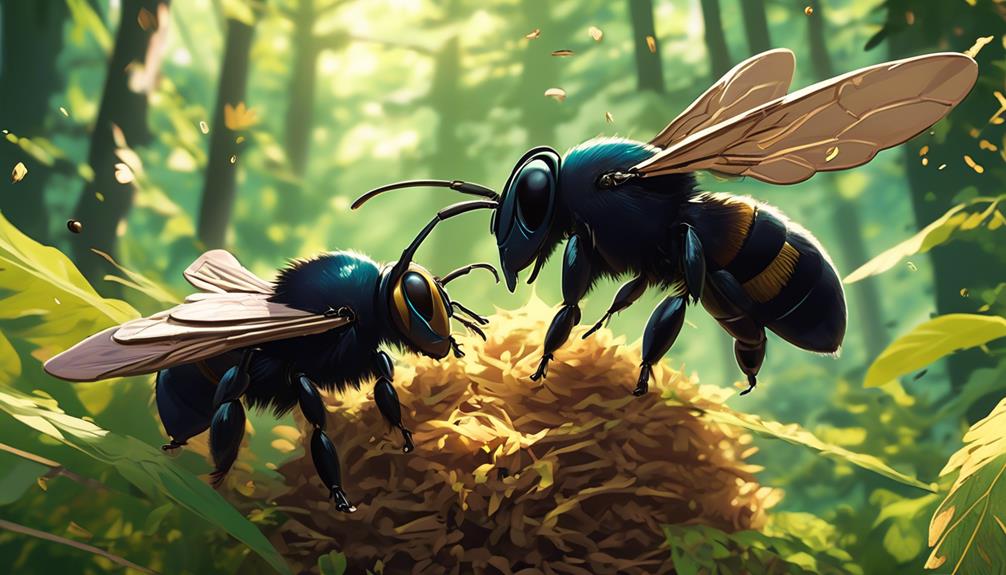
Understanding the behavior and lifestyle of carpenter bees is essential, as it's intricately tied to their ecological role and potential impact on human environments. You'll find that these bees are solitary creatures, with individual females constructing nests in wooden structures. They're not particularly aggressive, but females can sting if they feel threatened.
Carpenter bees are notorious for their nesting behavior. They're called 'carpenters' due to their ability to drill into wood to create complex tunnels for nesting. Unlike most bees, they don't produce honey or live in hives, but rather in these individual tunnels.
Their life cycle is another fascinating aspect. In spring, the female lays eggs in a series of small cells she's built within her nest. She then collects pollen and nectar, which she turns into a sort of 'bee bread' for her offspring to eat when they hatch.
While they can sometimes be viewed as pests due to their wood-boring habits, it's important to remember that they're vital for pollination. They're especially adept at pollinating open-faced flowers, making them a key player in the ecosystem of Western Pennsylvania.
Identifying Carpenter Bee Nests
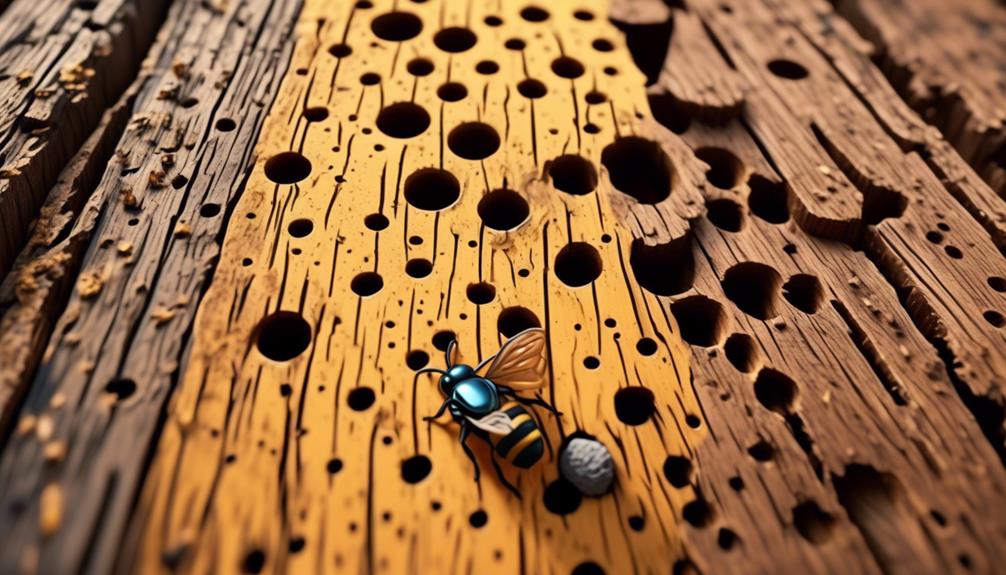
Having explored the behavior and lifestyle of carpenter bees, let's now turn our attention to how you can identify their nests, a critical step in understanding their interaction with human environments.
Carpenter bee nests are unique, typically located in dead wood or structural timbers. You'll notice smooth, round holes, about half an inch in diameter. They're not haphazardly created; these bees exhibit precision, creating nearly perfect circles. A telltale sign is a pile of sawdust or 'frass' beneath the hole, a byproduct of their drilling.
Within the nest, bees construct a series of tunnels, or 'galleries', which can extend up to 10 feet long over time. If you listen closely, you might hear a faint buzzing from the busy occupants inside.
Your initial sighting might be a solitary bee hovering near the wood surface. This is likely a male bee, who's more aggressive but harmless as they can't sting, standing guard while the female is inside, excavating the tunnel and laying eggs.
Proper Response to Carpenter Bee Infestation
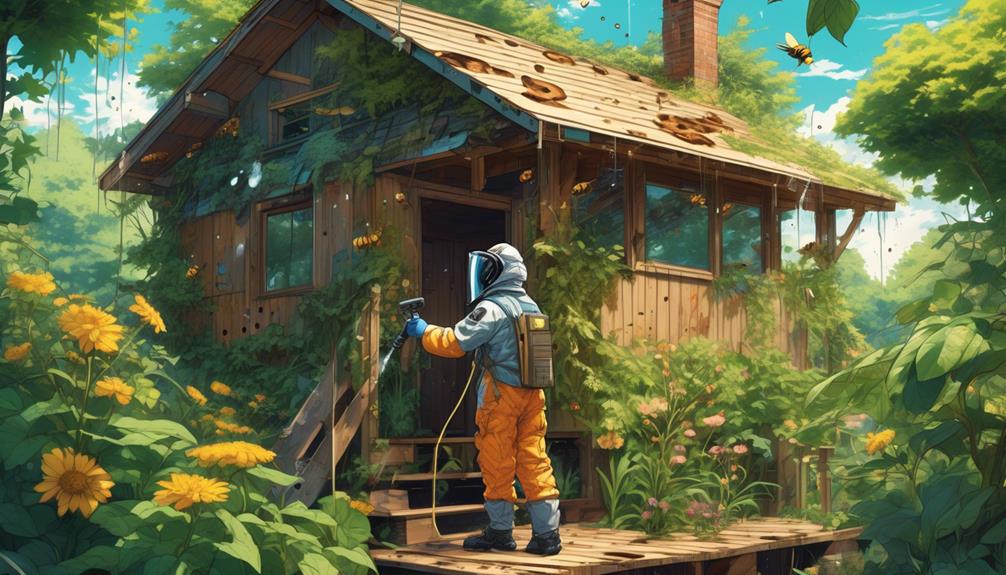
In the event of a carpenter bee infestation, it's crucial to respond promptly and effectively to prevent extensive structural damage to your property. These wood-boring insects can compromise the integrity of your structures if they're not dealt with swiftly.
Firstly, you'll need to identify the carpenter bee nests, which typically look like 1/2 inch diameter holes in wood. The presence of fine sawdust or yellowish staining around these holes are tell-tale signs of infestation.
Once you've confirmed an infestation, it's best to contact a professional pest control service. They'll have the necessary equipment and expertise to safely eliminate the carpenter bees without causing further damage. They can also provide effective treatments to discourage re-infestation.
If you decide to tackle the infestation yourself, apply an insecticidal dust into the nest openings during the evening when the bees are less active. Plug the holes after a few days to prevent re-infestation.
Last, but not least, consider preventive measures. Paint or stain exposed wood to make it less attractive to carpenter bees. Regular inspections for signs of bee activity can also help catch an infestation early before it becomes a major issue.
Conclusion
In conclusion, you've now grasped the role of carpenter bees in our ecosystem. You've delved into their lifestyle, learned to identify their nests, and understood how to respond to an infestation.
Remember, these creatures aren't just pests—they play a vital role in pollination. So, let's respect their part in nature while also protecting our homes.
Knowledge is power, and you're now well-equipped to coexist with these industrious insects.

